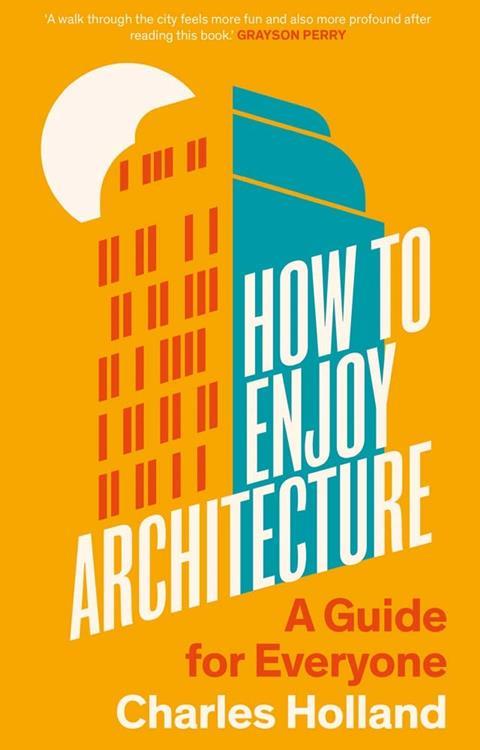Charles Holland’s new book invites the reader to approach its subject as a shared endeavour with its author, writes Nicholas de Klerk

There is something slightly ironic about reviewing a book whose stated aim is to make architecture more appreciable by and accessible to a wider public, only for a readership largely constituted by other architects. The book has a message, however, that architects themselves would benefit from hearing.
This review may well be one of the shorter ones that I have written in that, not unlike the mathematical tiles that introduce Holland’s chapter on materials, the pleasure, and the meaning of the book is less in the structure and the detail – and there is a great deal of fascinating detail and insight in the book – than in how it is encountered, how it is written, and read.
There are six chapters which variously discuss style, composition, space, materials, structure, and use, prefaced by an introduction. The chapters contain few illustrations and are not exhaustive; this is a big topic, and the book neither tries nor needs to be comprehensive.
It could be read as a riposte to the culture wars that attempt to define and generate conflict in so much of contemporary life – including in architecture and urbanism – in being generous and inclusive in its very conception. It is also perhaps a less direct riposte to another recent treatise on architecture; if, after reading this book, you still think architecture is boring, you’re clearly not looking closely enough.
The register and tone of the book is finely balanced and refuses to condescend its reader. It is conversational and takes as much pleasure – a wholly underrated aspect of architecture – in the text itself, as it does in the things it discusses. Holland does this by writing almost as what one might call a dispassionate observer or guide, albeit a knowledgeable, erudite and generous one.
>> Also read: The Architecture of Sir Edwin Lutyens – Volume 2: Gardens, Delhi, Washington
He repeatedly places the observer, sometimes himself, but mostly the reader, in the spaces, buildings and in close proximity to the things he discusses (buildings and representations of them), inviting the reader to perform Alan Colquhoun’s maxim that: “architecture is a form of knowledge by experience”. He ends the chapter on style by suggesting that we, author and reader, have examined the notion of style from myriad perspectives and that we can “see style as a way in”. This is an explicit acknowledgement that Holland sees this endeavour very much as a shared one and sets the tone for the rest of the book.
Perhaps a favourite line in the book is his answer to Louis Kahn’s well-known gauntlet about what a brick ‘wants to be’. Holland suggests that a brick in this context does not “want to be a building as such, but the remains of a previous architecture.” Simply put, this demonstrates the ability of both the idea and physical reality of architecture to be allusive and relational, to mean different things to different publics, to be contemporary and historic, esoteric and everyday, all at the same time. This is fundamental to opening up (the enjoyment of) architecture to everyone.
In 1967, French critic and theorist Roland Barthes famously declared the Death of the Author in ceding the primacy of the creator of a text, or in our case a building, and foregrounding the reader or user in determining its meaning. This is less about questioning authorship, which in any case has become vastly more complex and shared over recent decades, and more about enabling users to enjoy architecture without the specific need for specialist knowledge or indeed understanding of the architect’s own intentions. Holland’s guide sets out fundamental principles by which this subject may be navigated and the deliberate omission of a conclusion to the book suggests that this can and should be an open ended, exploratory and enjoyable pursuit.
Postscript
How to Enjoy Architecture: A Guide for Everyone by Charles Holland, is published by Yale University Press
Nicholas de Klerk is an architect and associate partner at Purcell
















No comments yet